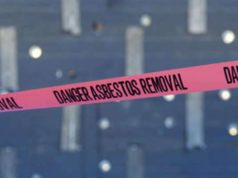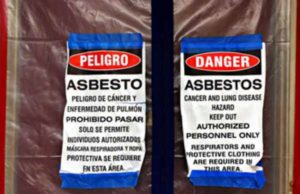
The Asbestos Control Program, through the Rhode Island Department of Health, sets the asbestos abatement procedure for the state. This will include certifying abatement professionals, review procedures and collecting notifications of renovation and demolition. Many homes and structures still contain asbestos construction materials, so adhering to Rhode Island asbestos abatement procedure is necessary to limiting one’s legal liability and protecting them from potential exposure.
Notification requirements
You must complete an Asbestos Start Work Notification form ten days before the work begins at the construction site. This form is filed to the DoH in person, fax or email, so unlike other states, copies are acceptable. On this form, you will note information about the facility, the quantity of asbestos present and the type of operation. In addition, you will specify an asbestos removal schedule and procedures for unexpected or emergency conditions that may occur during the asbestos abatement procedure. Most importantly, the form will be signed and certified by the contractor performing the construction work. The contractor will account for disposal procedures and other relevant information on the form.
Standard asbestos abatement procedures
Most asbestos abatement that involves removal will set up a negative pressure enclosure. This is an enclosed environment powered by a filter that will cycle all of the air at least four times an hour. This controlled environment easily traps loose particles in the sensitive filter and prevents asbestos fibers from causing secondary contamination. The filter may be supplemented with a HEPA vacuum that will remove visible asbestos debris. In addition to this equipment, most large scale sites will feature a decontamination shower and safe area where workers can removed contamination equipment to prevent its spread into the environment. Generally, asbestos abatement equipment will be sterilized or disposed after the project has been completed.
Options for friable asbestos
Friable asbestos can be removed or sealed. Removal is the most expensive option and will require specialized equipment, as described previously. The safest way to remove friable asbestos is to waterlog it, thus preventing fibers from escaping. The wet material is then scraped and sealed in either bags or other containers for disposal. Regulations will state how this barrel must be labeled.
An alternative to this method is sealing it through encapsulation or enclosure. Enclosure involves sealing materials, such as asbestos pipes, in concrete to prevent fibers from escaping. Encapsulation is a bit more sophisticated and involves the spray application of a polymer that will prevent the material from breaking apart. This will render the asbestos inert until it is breached or otherwise disturbed during construction.
Friable asbestos is very easy to disintegrate, thus necessitating its removal according to Rhode Island asbestos abatement procedure.
Proper disposal
You will need to complete an asbestos waste shipment report form when you deliver the asbestos contaminated material to the landfill. Typically, large amounts of friable asbestos will be stored wet, in sealed and labeled containers, as per federal regulations. Homeowners that do not have to hire contractors or provide notification to the DoH must still abide by the sealing and labeling regulations according to Rhode Island asbestos abatement procedure.




























